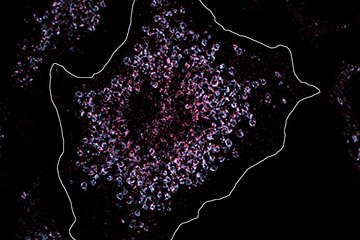Cause of listlessness in depression discovered
Lack of activation of the locus coeruleus in the brain inhibits the inner drive
Researchers at the Max Planck Institute of Psychiatry in Munich, Germany, have discovered that the dilation of the pupil in response to an expected reward depends on whether a person can feel pleasure. This indicates that insufficient activity of the locus coeruleus in the brain is largely responsible for the lack of drive in people with depression.

Scientists from the Max Planck Institute of Psychiatry measured the pupillary reaction of participants while they were solving a task. In healthy participants, the pupils dilated during the task in anticipation of a reward, but this reaction was less pronounced in participants with depression: "The reduced pupil reaction was particularly noticeable in patients who could no longer feel pleasure and reported a loss of energy," says Andy Brendler, first author of the study.
The feeling of listlessness is one of the most common symptoms of depression. "This finding helps us to better understand the physiological mechanisms behind listlessness," explains research group leader Victor Spoormaker. Amongst other things, the pupillary reaction is a marker for activity in the locus coeruleus, the brain structure with the highest concentration of noradrenergic neurons in the central nervous system.
The locus coeruleus is important for the feeling of listlessness
Noradrenergic neurons react to the neurotransmitter norepinephrine, an important component in the stress response and the upregulation of arousal, in other words the activation of the nervous system. "The reduced pupillary response in patients with more listlessness indicates that the lacking activation of the locus coeruleus is an important physiological process that underlies the feeling of listlessness," says Spoormaker.
The study also found the pupil response to be weaker the more depressive symptoms participants had. This replicates the findings of a previous study by the same research group. The replicability of neuropsychiatric methods is more the exception than the rule, and demonstrates the reliability of pupillometry as a method.
Pupillometry could be used as a supplementary method for diagnosis. It could also contribute to the development of individualized treatment strategies for depression. For example, if a patient shows a significantly reduced pupil response, antidepressants that act on the noradrenergic system could be more effective than other medications. The medication dosage could also be optimized based on the pupil reaction. Considering that an estimated 30 percent of depressive patients do not improve using the currently available medication. Understanding the physiological mechanisms behind depression and fine-tuning diagnosis and treatment accordingly is urgently required.












